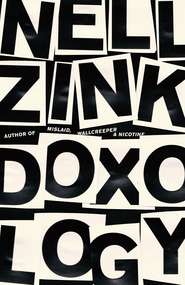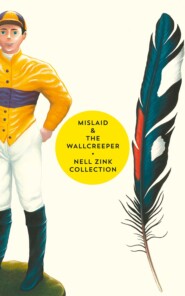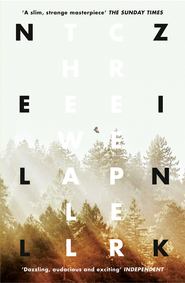По всем вопросам обращайтесь на: info@litportal.ru
(©) 2003-2024.
✖
Mislaid
Автор
Год написания книги
2018
Настройки чтения
Размер шрифта
Высота строк
Поля
She was impressed with the simplicity and poverty of Meg’s life. There was something monastic and almost elegant in the neatly scrubbed cabin standing in four inches of water in a settlement that had been given up decades before. Meg offered her a choice between water from the pump and warm Fresca. As she drank the Fresca, she wondered silently to herself about the Lord’s mysterious ways, choosing an anemic black child with arms like twigs to demonstrate the ironies of nonviolent resistance. (She assumed Karen’s tactic was nonviolence, possibly because Karen pulled her punches to the extent that mosquitoes she swatted flew away stunned.) She told Meg that Karen was very special. They prayed together.
When she had gone, Meg said, “You should stop telling people you’re blond. There are a lot of mean jokes about blondes. It’s nothing to be proud of.”
Karen became the special concern of every adult at the school. Children instinctively hated her for being different, and adults identified with her for the exact same reason. To be perfect (adorably wee and blond) yet marked for failure (black and dressed in rags)—don’t we all know that feeling? The principal, who had voted for George Wallace for president, couldn’t watch her bounce away across the schoolyard without musing that a petite female with a white body and a black soul might in ten or twelve years’ time be a sort of dream come true, assuming she moved away to the city and pursued a career in show business, broadly defined.
He spoke about her at a teachers’ conference, and it was resolved that she would be groomed for export despite her handicap. It was decided to skip her over second grade, since she knew the names of the months and all nine planets. Skipping her would catch her up to the other smart black kid and save them from creating an extra independent study group later on. Her promotion would have the added virtue of raising black enrollment in the all-white “academic” track to two and acquitting the school of lingering charges of tokenism.
Karen’s sole black classmate was a boy named Temple Moody. They sat together at lunch the day they met—the first day of third grade—and every school day after that.
To look at, Temple was about as black as a person could get, as though the school were hoping to pack as much blackness as possible into each “token black” seat in each of his successive integrated classrooms. Initially he was chosen for his mannerly comportment and tidy clothes and resented only for making it impossible for his classmates to win at Eraser Walk. The eraser nestled in his hair like an egg in a nest. He could have hopped to the blackboard on one foot. The class voted never to play Eraser Walk again. One by one, his superior achievements were acknowledged with surrender. He called it “raising the white flag.”
By week five of third grade, Karen had forgotten what it was like to be bullied. Temple was not about to let competing children distract her.
It was soon a done deal among the children that they would marry. There was no question of a white boy’s teasing her or kissing her. No girls of either race played with her hair.
Meg bought a packet of thirty Valentines, enough for the entire class. Karen labeled and distributed them all, but she brought home only three: one from the teacher, one from Temple, and one from a Catholic girl whose exotic last name—Schmidt—regularly made the class dissolve in laughter. Birthdays were a nonstarter, since Meg couldn’t have kids over to that house. Plus the date and the year were false, so it seemed like tempting fate to make a big deal out of Karen’s birthday. Christmas depressed Meg, and she did her best to ignore it. Amber “Shit” Schmidt was not a big party-thrower either.
So for several years in a row, the high point of Karen’s year was Temple Moody’s birthday. Possibly it more than made up for the Neapolitan ice cream and Pin the Tail on the Donkey she missed by not being white. Temple’s birthday involved adults and older children—approximately fifty in all—along with hard liquor, catfish, chicken, trifle, and a piñata.
He lived in a sprawling compound on a creek bank, hundreds of years old, with a four-seater outhouse and a shed full of broken farm implements from before the trees grew. The woods leading to it were dense with greenbrier through which deer had beaten paths like a hedge maze. There was only one party game: Run Wild. The adults would settle in, on and around the porch, while the children ran wild. Eventually one of Temple’s older brothers would throw a rope over a high oak bough and haul up the piñata.
The Moodys regarded piñatas as a neglected Native American tradition. They assumed partial descent from Indians. Temple’s mother had a fond uncle in Reno, Nevada, at the end of the Trail of Tears, and he mailed her authentic Indian crafts every year for Christmas: Navajo sand paintings, Pomo baskets, Hopi dolls. And for Temple’s birthday, a piñata.
Вы ознакомились с фрагментом книги.
Приобретайте полный текст книги у нашего партнера:
Приобретайте полный текст книги у нашего партнера:








